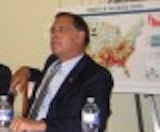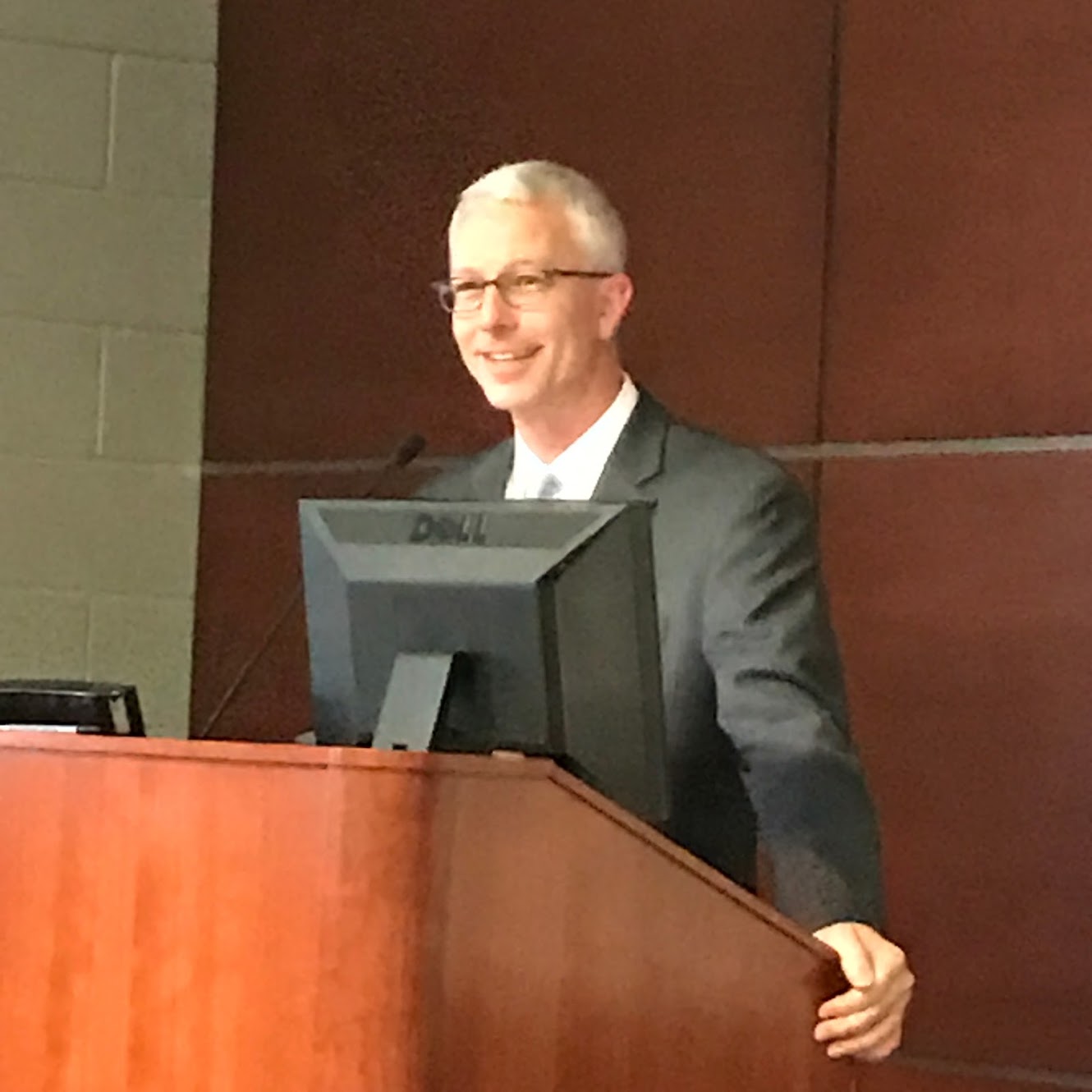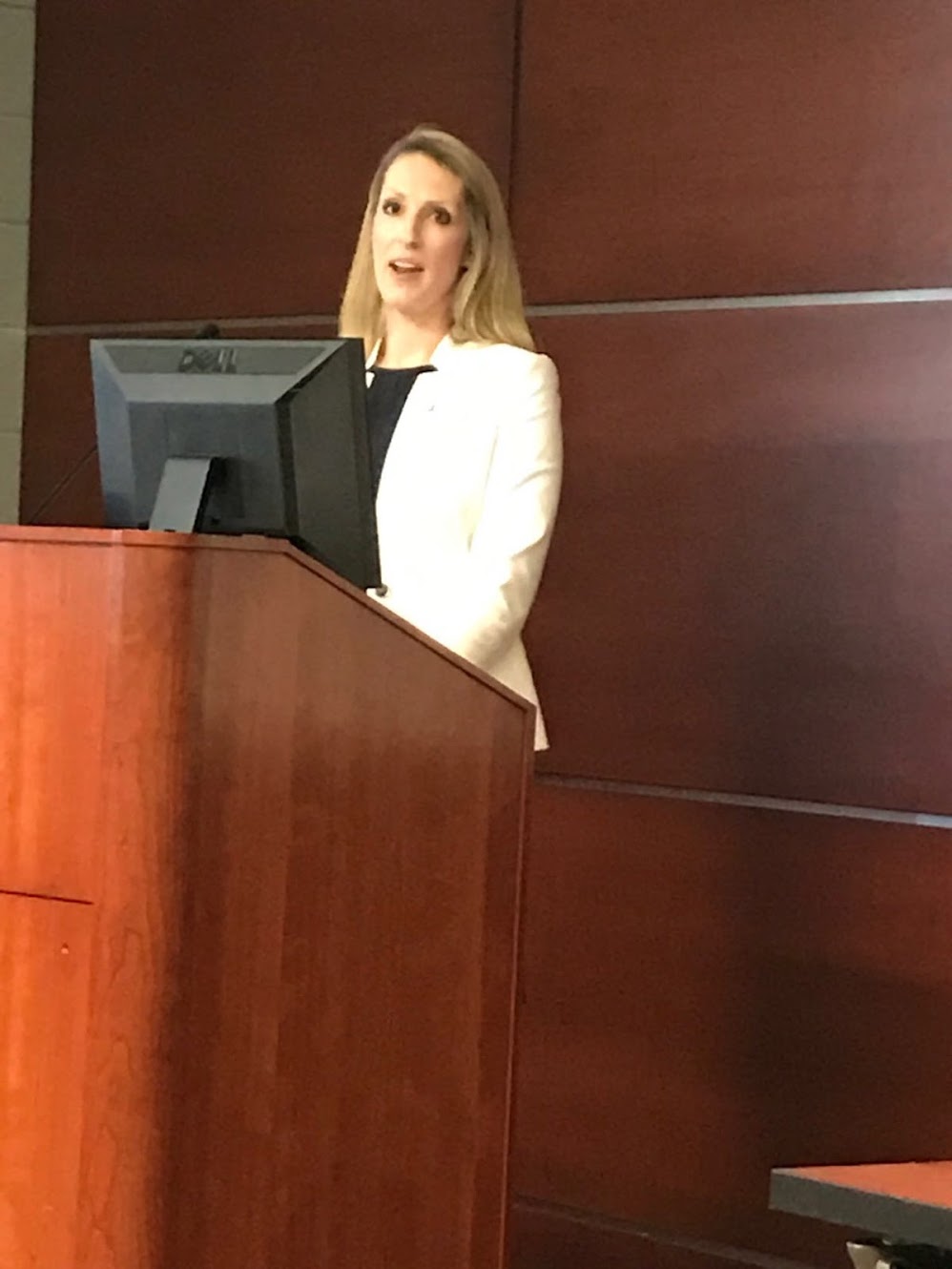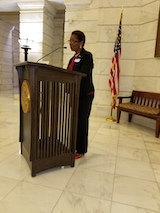Economic Equality Caucus
which advocates for economic equality across the USA.
| Home | Organizational Structure | State Coordinators | Executive Director | Caucus Articles | Memberships | |||||
| "Delta Vision, Delta Voices" | ||||||||||
|
Help Advocate for Economic Progress and Equality. Donate to the Delta Caucus/Economic Equality Caucus. |
||||||||||
Delta Grassroots Caucus Events

Credit Michael Hibblen/ KUAR News, Arkansas Public Radio; Former President Bill Clinton speaking to the Delta Grassroots Caucus on May 2, 2013, at the University of Arkansas Clinton School of Public Service, Little Rock

U. S. Senator John Boozman, Arkansas, at a Delta Grassroots Caucus meeting at the US Capitol

Brad Cole, Executive Director of the Municipal League of Illinois; previously a senior aide to former Republican US Sen. Mark Kirk of Illinois, earlier Mayor of Carbondale, Illinois, veteran Delta regional advocate, speaking at the Delta regional conference in West Memphis, Arkansas on April 26, 2019.

President Bill Clinton makes a comment to Delta Caucus Director Lee Powell at a meeting in Blytheville, Arkansas (in the northeast Arkansas Delta) on Nov. 2, 2014

The Delta Caucus would like to pay tribute to the late, great U.S. Sen. Thad Cochran of Mississippi, a powerful force in the US Senate for decades and a champion for the Delta. Sen. Cochran passed away on May 30, 2019. He spoke to the Delta Caucus on many occasions over the years (he is pictured above speaking to a Caucus event on Capitol Hill in Washington, DC) and his thoughtful, courteous and bipartisan leadership will be sorely missed.

Marcie Lawson, Executive Director, Sikeston, Missouri Regional Chamber and Area Economic Development Corporation, speaking at the Delta regional conference in West Memphis, Arkansas on April 26, 2019.

Alan Gumbel, Greater Memphis Alliance for a Competitive Workforce, Memphis, Tennessee, speaking at the Delta regional conference in West Memphis, Arkansas on April 26, 2019.

Mayor Shirley Washington of Pine Bluff, AR, speaking to the Delta Caucus at the Arkansas Capitol Rotunda in 2017.
Economic Reports Show Decline in Economic Inequality & Poverty: Departure from Recent Trends
Posted on September 14, 2016 at 12:35 PM
Poverty and income inequality are still serious problems in the Delta, Southwest Border, Appalachia, inner cities including Washington, DC and many other areas, but median incomes rose 5.2% in 2015 and poverty rates fell by 1.2%, the biggest decline since 1968. Census Bureau reports show some relative progress even for lower income groups, despite the continuing problems.
What may be even more surprising to many people who take the erroneous, defeatist view that America has accomplished nothing to fight poverty over the past 50 years is this conclusion based on exhaustive research by the City University of New York:
Many of the poorest states from 1990 to 2014 experienced the largest increase in income for the lowest income groups: the top four of these states were Arkansas, Kentucky, Louisiana, and Mississippi, with Oklahoma sixth and West Virginia in the heart of Appalachia eighth.
The figures on economic inequality and the rise in wages from 1990 to 2014 for the poorest states were based on meticulous research by the City University of New York, which has been extensively reported in the New York Times and other media across the country. As the New York Times summarized the research of CUNY’s Branko Milanovic:
States that have lagged economically “like Arkansas and Mississippi are the ones where economic inequality has narrowed the most…federally funded social programs will have a greater impact on the lower percentiles of income in the South in percentage terms.” (Income Inequality by State,” by Quoctring Bui, New York Times, Sept. 6, 2016).
Stepping back and looking at the bigger picture since Medicaid, Medicare, the expansion of major USDA nutrition programs and other anti-poverty initiatives began in the 1960s, again there is a major change in the states where economic inequality was greatest: in the 1960s, those states were all in the South–Mississippi, South Carolina, Arkansas, Alabama and North Carolina.
By 2010, the most unequal states were California, New York, Texas, Arizona and Georgia. These states are characterized by extremes of both great wealth and poverty within their borders.
The CUNY report took cost of living into consideration, and therefore avoided making inaccurate comparisons between areas with widely divergent costs of living.
For the recent nationwide figures, there were 3.5 million fewer people in poverty in 2015 than there were in 2014.
The percentage of Americans lacking health insurance continued to decline, this time by 1.3% to a new lower level of 9.1%. The Affordable Care Act was the major force behind an increase of 4 million people who gained health insurance coverage.
This still leaves 43.1 million Americans in poverty, and that’s far too high. We have a long way to go.
In a departure from the expanding income inequality in our recent history, wages grew most for the lowest-earning workers and least for the highest earning ones, and all racial and ethnic groups improved-although the gap for women and minorities still remains as a problem.
Nonetheless, there was improvement: income for the poorest 10% of households expanded by a robust 7.9%, as opposed to just 2.9% for the wealthiest 10%.
The limited progress was a result of falling unemployment, rising wages in most areas, and a labor market where employers are being forced to compete for workers, along with low inflation.
Even in areas like Washington, DC/Virginia/Maryland there are areas of poverty despite the general affluence of this region, and the high cost of living in the area creates pressures even for many middle class families.
Arkansas and Mississippi unfortunately rank 49th and 50th in median income, so the relative position of these states at the bottom remains an issue.
However, Arkansas’ median income did grow by 1.7%, and the much lower cost of living in Arkansas tempers the lower income numbers, according to Michael Pakko, chief economist at the Institute for Economic Advancement at the University of Arkansas at Little Rock. Arkansas’ cost of living is 12.5% lower than the national average.
Arkansas, Mississippi and Missouri in particular have much lower housing costs than other states.
Disappointing results nationally: minimal improvement in income for women and people in rural areas: While unemployment fell in many rural areas in Arkansas and the Delta and the cost of living is lower there, rural areas nationally did not see a median income increase, so that is a significant finding that remains disappointing.
Another disappointing result showed that women on average earned 80% of income compared to men in 2015, a minor improvement from 79% in 2014.
For the longer term picture, not surprisingly the CUNY report indicated that the worst period of depressed incomes for the middle class and the poor was after 2000 and especially during the Great Recession.
Both the longer term data and the latest Census Bureau reports indicate two fundamental realities: for the short term, the economic recovery is finally starting to reach middle class and lower income groups, and for the long term the worst instances of poverty, hunger and inadequate health care have been significantly reduced since 1960. But this is only because poverty was relatively speaking so severe in that era and the progress is only relative to that low point.
It cannot be emphasized too strongly that the Delta Caucus and our national affiliate, the Economic Equality Coalition, believe poverty and economic inequality are far too high both regionally and nationally. Our deep concerns on those points are in fact the reason for our existence. We are talking about some relative progress that has not gone anywhere near far enough.
We should also emphasize that the relative improvement in the poorest states and populations was substantially influenced both in the longer term data and the recent recovery from the Great Recession by the fact that those groups were so far behind to begin with. The progress was relative to the very low beginning points and America still remains the most economically unequal among the affluent nations.
We need major investments in expanding and improving the major economic progress programs like Medicare, Medicaid, SNAP, WIC, childhood nutrition programs, Earned Income Tax Credit, investments in infrastructure to create jobs and improve our deteriorating infrastructure, and other initiatives to fight poverty and hunger. The Affordable Care Act needs significant improvements and many in our coalition believe the next President should support the public option in health care.
Back to the top